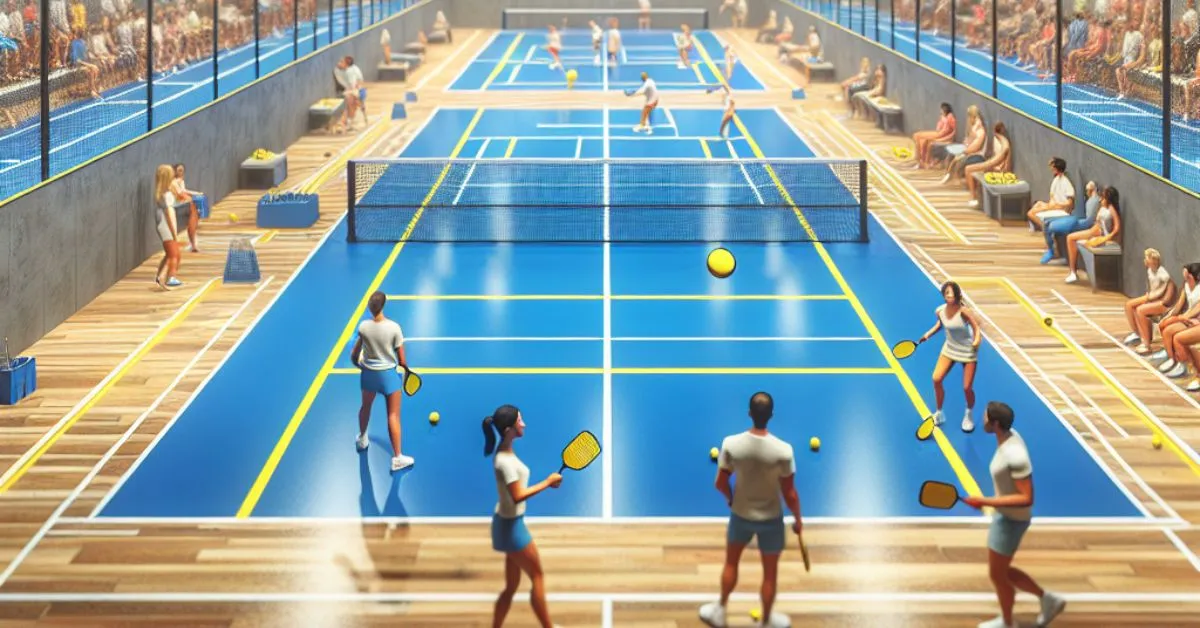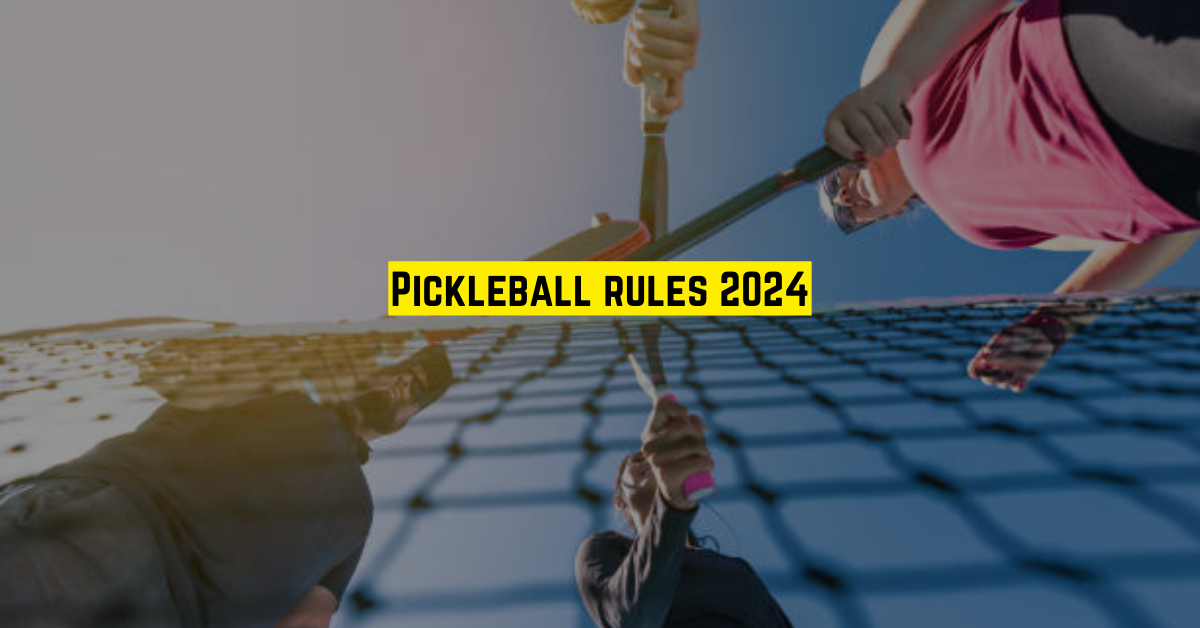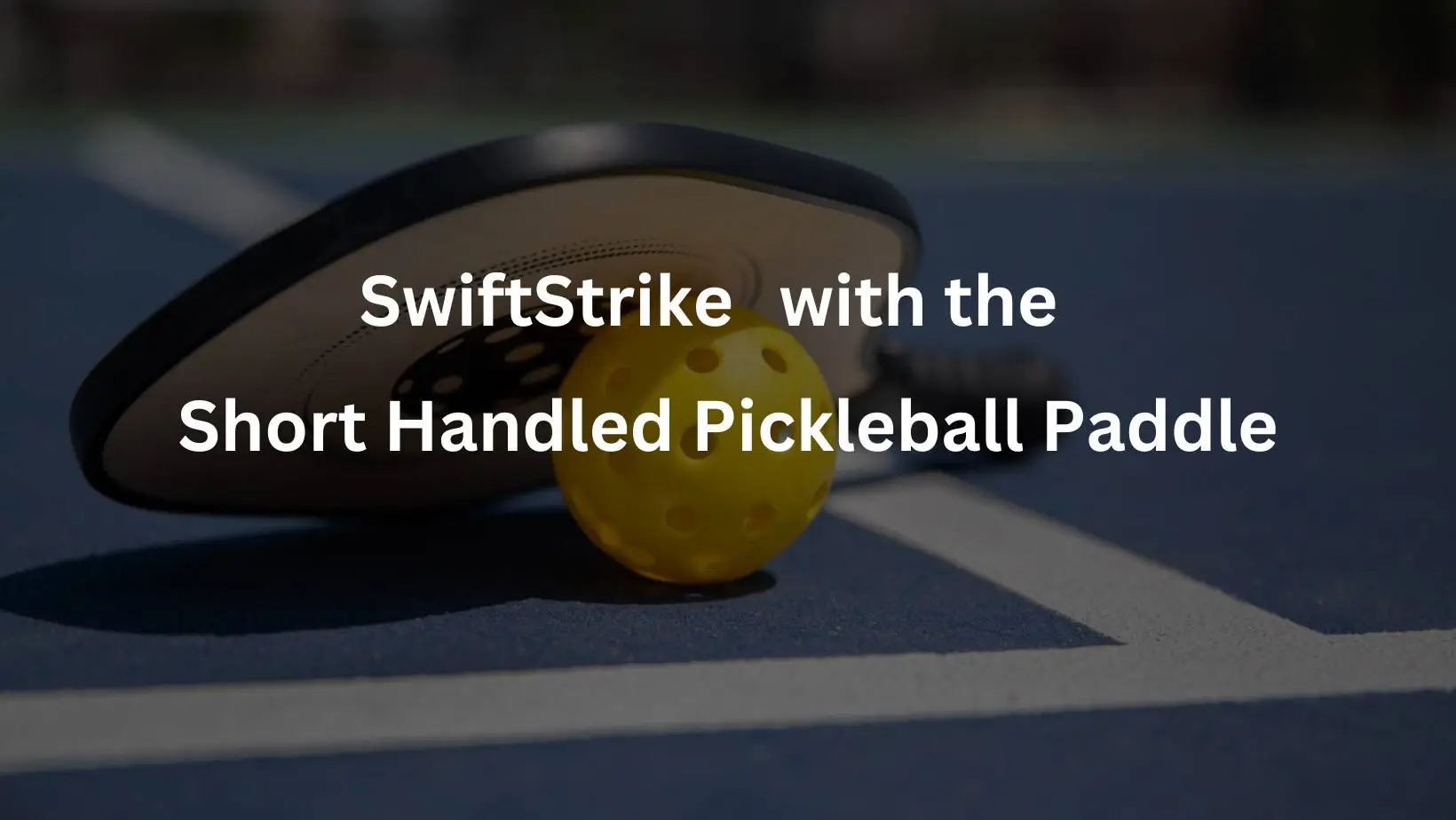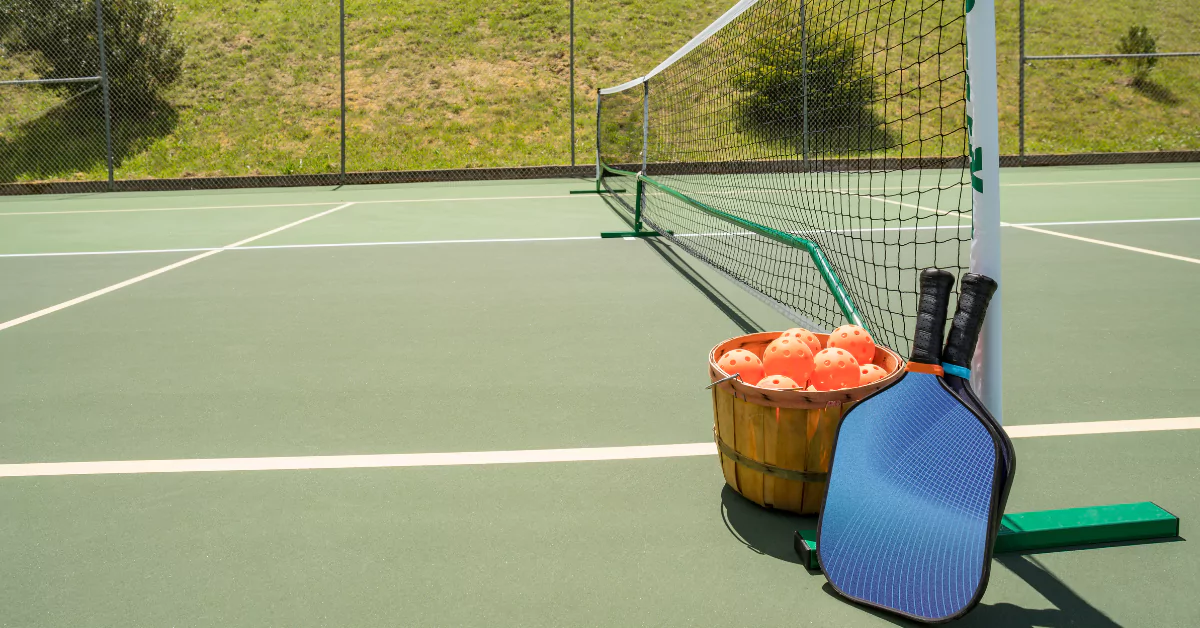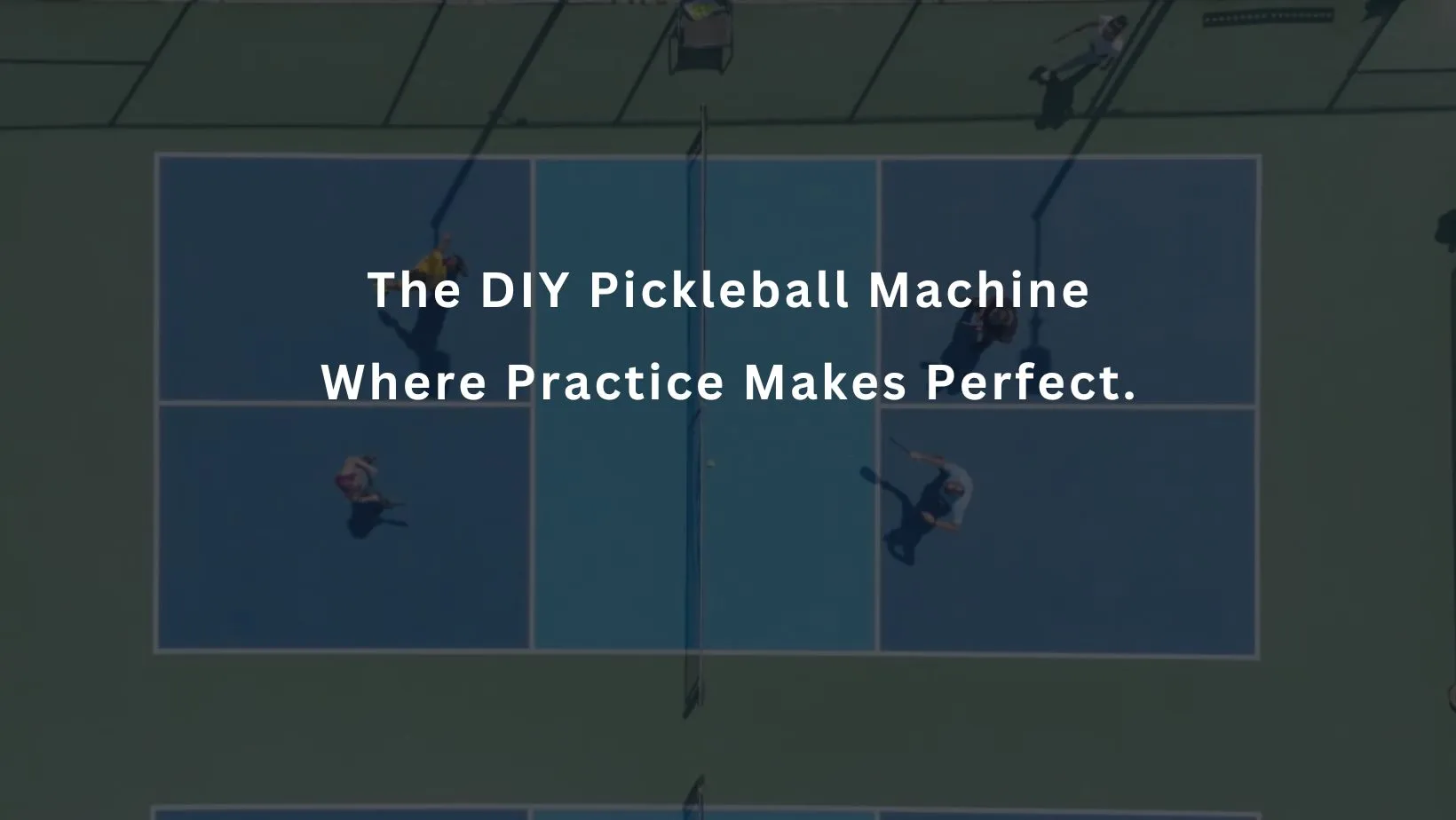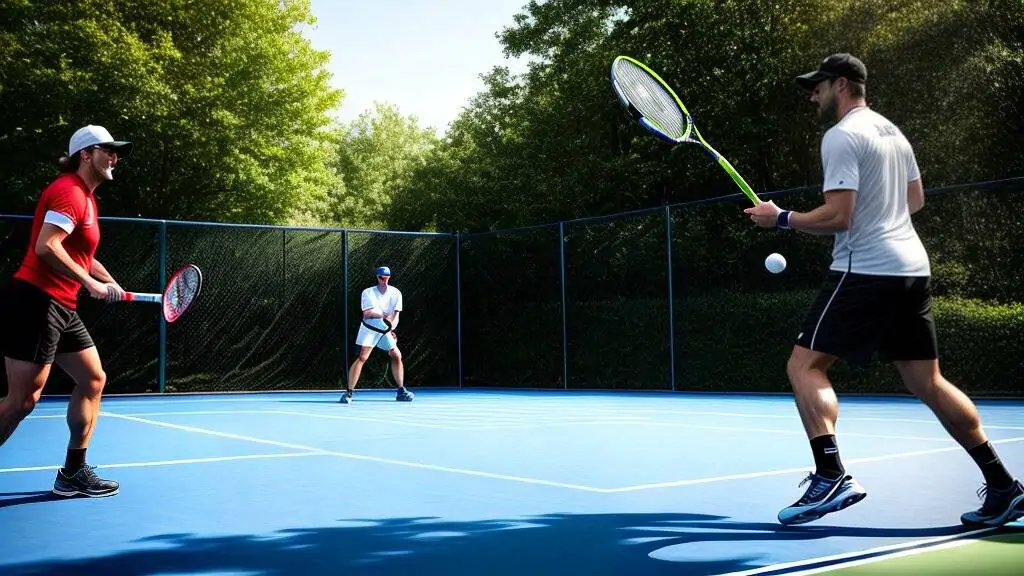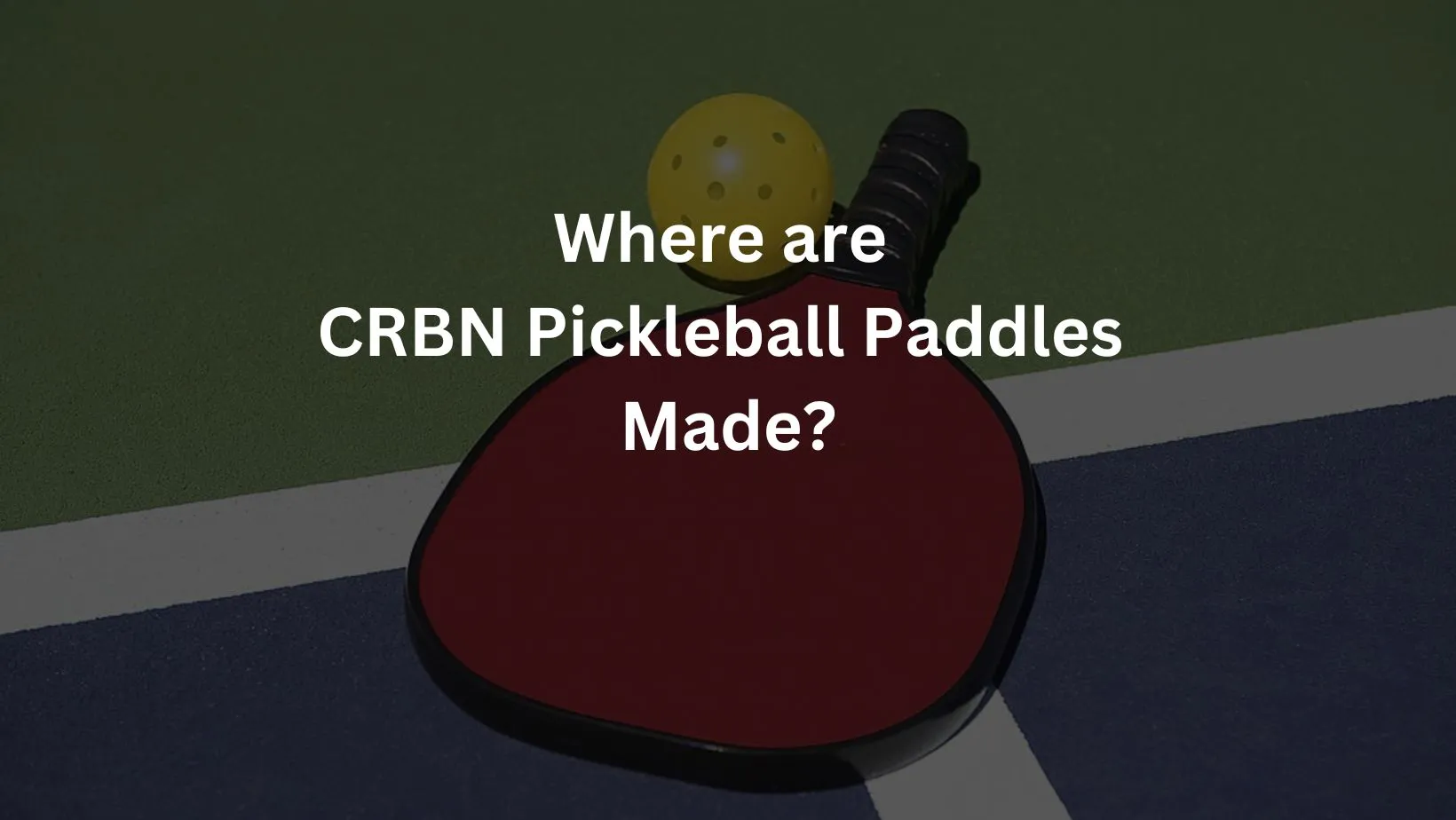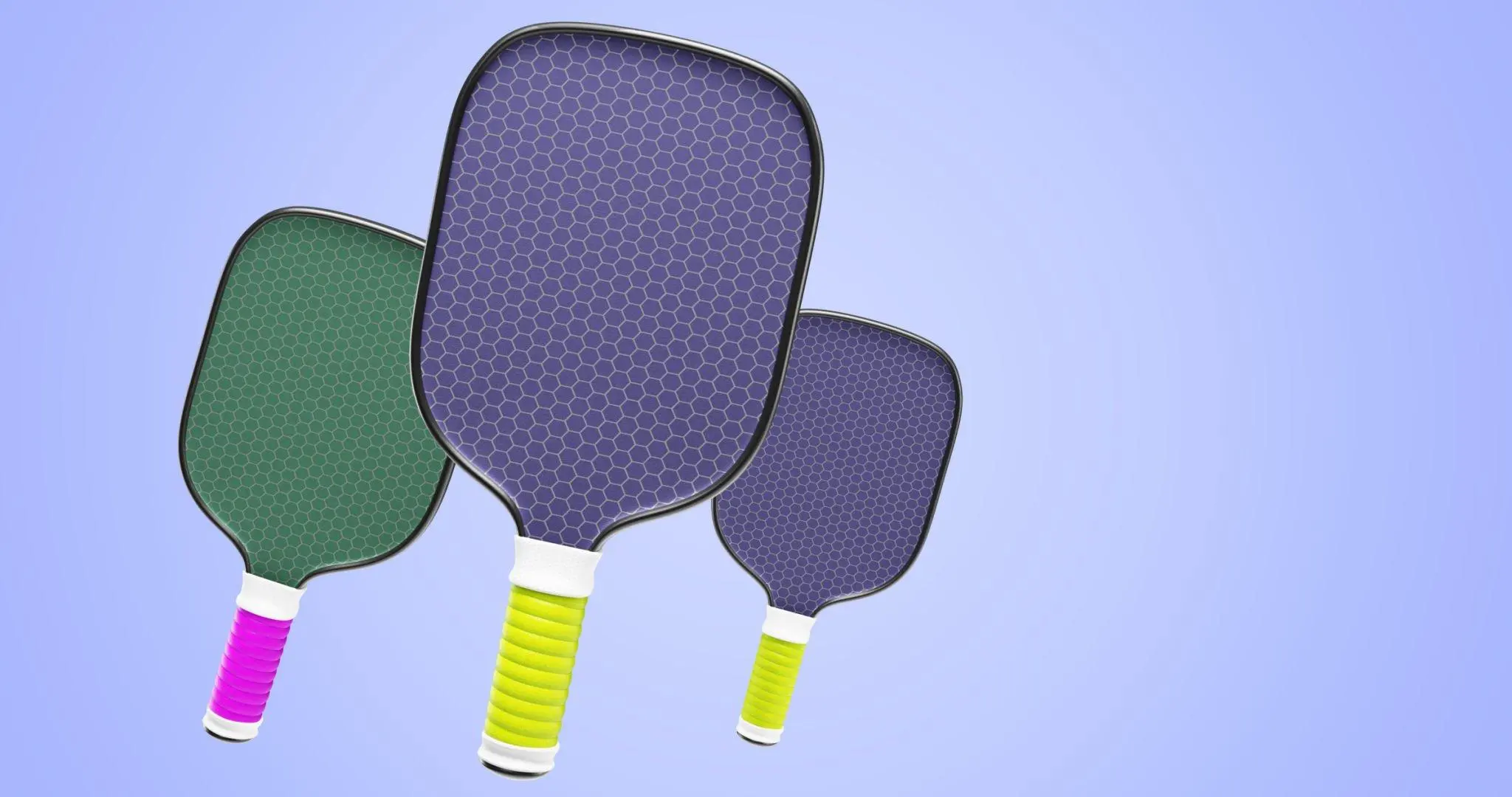Discover the benefits of playing pickleball on indoor courts rain or shine! Learn about the differences between indoor and outdoor courts and why indoor courts are the preferred choice for players of all levels. Grab your paddle and dive into the world of indoor pickleball!
I’m thrilled to share with you the exciting world of indoor pickleball courts, where you can indulge in the game rain or shine! Whether you’re already a pickleball enthusiast or new to the sport, the convenience and versatility of indoor courts offer an irresistible opportunity to enjoy the game in any weather condition.
In this article, we’ll explore the benefits and differences between indoor and outdoor pickleball courts, giving you a clearer picture of why indoor courts are becoming the go-to choice for players of all levels. So grab your paddle and let’s dive into the wonderful world of indoor pickleball!
The origin of Pickleball
Pickleball, a popular racquet sport, has an interesting origin that dates back to the summer of 1965. It was created by three friends: Joel Pritchard, Bill Bell, and Barney McCallum. The three friends wanted to find a game that would entertain their families during a lazy summer afternoon.
They gathered some equipment, including an old badminton net, a perforated plastic ball, and wooden paddles, and set up a makeshift court in Joel Pritchard’s backyard on Bainbridge Island, Washington. Little did they know that this spontaneous creation would evolve into the vibrant sport of pickleball that we know today.
Rules of the game
To fully enjoy pickleball, it is essential to understand the rules of the game. Pickleball is played on a badminton-sized court, with the net positioned at a height of 36 inches at the center. The game can be played in singles or doubles, with two teams on opposite sides of the court. The objective is to hit the ball over the net and land it within the boundaries of the opponent’s court.
Each team has three chances to return the ball before the opposing team gets a chance. The rally continues until one team fails to return the ball, resulting in a point for the opposing team. The first team to reach 11 points, with a margin of two points, wins the game.
Equipment needed for Pickleball
To enjoy a game of pickleball, you will need specific equipment. This includes a pickleball paddle, which is larger than a table tennis paddle and similar to a tennis racket, but made of lightweight materials. The paddle’s face is perforated to reduce wind resistance. In addition to a paddle, you will need a pickleball, similar to a plastic wiffle ball, but with smaller holes.
Pickleballs are available in various colors and materials, depending on the level of play and desired ball response. Comfortable athletic shoes with good traction are also essential to navigate the court effectively.

The growing popularity of Pickleball
Pickleball has been gaining popularity worldwide, attracting players of all ages and skill levels. Its wide appeal can be attributed to its simplicity, social nature, and adaptability. Pickleball is easy to learn and provides a low-impact form of exercise, making it accessible to people of different fitness levels.
The sport also encourages social interaction and friendly competition, creating a welcoming and inclusive environment. With its growing popularity, pickleball courts have been sprouting up in various locations, both indoors and outdoors, to accommodate the increasing demand for this exciting sport.
Salient Features of Indoor Pickleball Courts
Types of indoor courts
Indoor pickleball courts can be found in a variety of settings, such as community centers, sports complexes, and schools. The most common types of indoor courts include dedicated pickleball facilities, converted tennis or basketball courts, and gymnasiums with temporary court setups. Dedicated pickleball facilities offer the best playing experience, as they are specifically designed for pickleball and cater to the needs of players.
Dimensions of an indoor court
Indoor pickleball courts have specific dimensions that must be adhered to for proper gameplay. The court measures 20 feet wide by 44 feet long for doubles play, and 20 feet wide by 22 feet long for singles play. These dimensions ensure a balanced playing field and allow players to move freely without any interference.
Flooring material options for indoor courts
Choosing the right flooring material for an indoor pickleball court is crucial for player safety and performance. The most common flooring options for indoor courts include hardwood, rubber, and interlocking tiles. Hardwood flooring provides excellent ball bounce and smooth movement but requires regular maintenance to prevent wear and tear.
Rubber flooring offers good shock absorption and is more forgiving on joints, making it a popular choice for pickleball courts. Interlocking tiles are another option and provide a durable and versatile surface that is easy to install and maintain.
Proper lighting for indoor Pickleball courts
Proper lighting is essential to ensure optimal visibility during indoor pickleball games. Adequate lighting helps players track the ball’s movement and make accurate shots. For indoor pickleball courts, it is recommended to have a lighting level of at least 50 foot-candles, evenly distributed across the court. LED lights are commonly used due to their energy efficiency and longevity. Additionally, using indirect or diffused lighting helps reduce glare and create a more comfortable playing environment.
Building an Indoor Pickleball Court
Considerations before building
Before embarking on the construction of an indoor pickleball court, several factors should be considered. The available space, budget, and local regulations are crucial aspects to evaluate. Indoor courts require a minimum ceiling height to accommodate proper lighting fixtures and allow players to hit shots comfortably.
Additionally, obtaining any necessary permits and approvals from local authorities is essential to ensure compliance with building codes and zoning regulations.
Cost estimate and planning
Building an indoor pickleball court involves financial investment, and it is essential to estimate the cost before starting construction. Factors such as materials, labor, permits, and lighting fixtures should be taken into account. It is advisable to consult with professionals or seek quotes from contractors to get an accurate cost estimate.
Detailed planning, including selecting the right location, ensuring proper dimensions, and considering future maintenance requirements, will contribute to a successful project.
Hiring a contractor or DIY
Deciding whether to hire a contractor or embark on a DIY project depends on various factors. Hiring a contractor can ease the burden of coordinating the construction process and ensure that experts handle the specialized aspects of court construction.
However, it is crucial to thoroughly research and select a reputable contractor who has experience building pickleball courts. On the other hand, a DIY project allows for more control over the process and might be a more cost-effective option for those with construction skills or experience.
Time needed for construction
The time needed to construct an indoor pickleball court depends on various factors, including the complexity of the project and the availability of resources. Typically, the construction process can take anywhere from a few weeks to several months.
Factors that can affect the timeline include site preparation, obtaining necessary permits, sourcing materials, and coordinating labor. It is important to plan accordingly and be patient throughout the construction process.
Advantages of Indoor Pickleball Courts
Protection from adverse outdoor weather
One of the significant advantages of indoor pickleball courts is the protection they provide from adverse outdoor weather conditions. Be it scorching heat, pouring rain, or freezing cold, indoor courts allow players to enjoy the game without worrying about the elements. This ensures a consistent playing experience, irrespective of the weather conditions outside.
Availability of play at any time
Indoor pickleball courts offer the convenience of playing year-round, regardless of the time of day. Unlike outdoor courts, which may have restricted playing hours or be unavailable during certain seasons, indoor courts are accessible at any time. This flexibility allows players to fit pickleball into their schedule and pursue their passion whenever they want.
Reduced noise disturbance
Compared to playing on outdoor courts, indoor pickleball courts tend to have reduced noise disturbance. The enclosed environment and sound-absorbing materials used in indoor facilities help minimize the noise generated during gameplay. This quieter atmosphere allows players to focus more effectively and communicate with their teammates without any distractions.
Increased player comfort
Indoor pickleball courts often provide a more comfortable playing environment compared to outdoor courts. The controlled indoor temperature ensures players do not have to battle extreme heat or cold, enhancing their comfort and overall enjoyment of the game. Additionally, indoor courts may offer amenities such as locker rooms, seating areas, and refreshment facilities, further enhancing the overall player experience.
Disadvantages of Indoor Pickleball Courts
Limited space and height constraints
One of the noticeable disadvantages of indoor pickleball courts is the limited space they often offer in comparison to outdoor courts. Indoor facilities, especially converted spaces or gymnasiums, may have space limitations due to existing structures or floor plans. This can affect the overall gameplay experience and restrict movement on the court. Similarly, height constraints, such as low ceilings, may hinder players’ ability to hit shots comfortably and limit the types of shots that can be executed.
Higher establishment cost
Establishing an indoor pickleball court typically involves higher costs compared to outdoor courts. The construction or conversion of an indoor space, including the installation of specialized flooring, lighting, and other amenities, can significantly increase the overall expenses. Additionally, there may be recurring costs such as heating, cooling, and maintenance that need to be considered when budgeting for an indoor court.
Continual maintenance and upkeep
Maintaining an indoor pickleball court requires regular attention and upkeep. The flooring material needs to be inspected and maintained, including periodic cleaning and repair. Lighting fixtures and electrical systems should be regularly inspected to ensure proper functionality. Continual maintenance is essential to maintain the integrity and safety of the indoor court, which may involve additional time and financial investment.
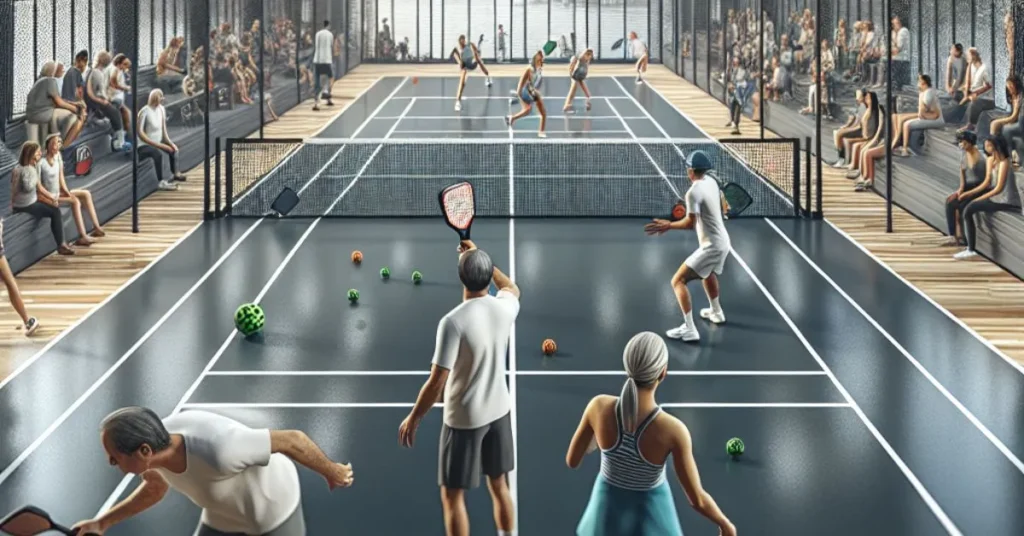
Indoor vs Outdoor Pickleball Courts
Understanding the differences
Indoor and outdoor pickleball courts have notable differences in terms of playing conditions and overall experience. Outdoor courts offer the freedom of open space, natural lighting, and exposure to the elements, providing a unique connection with nature. On the other hand, indoor courts provide controlled environments, protection from weather conditions, and the comfort of amenities.
Player preference
When it comes to personal preference, some players might gravitate towards the exhilaration of playing on an outdoor court, enjoying the fresh air and the challenges posed by wind and sunlight.
Others may prefer the controlled environment of indoor courts, appreciating the consistency of playing conditions and the convenience of year-round availability. Ultimately, it is a matter of personal choice and individual playing style.
Effect on game play
The choice between indoor and outdoor courts can have a significant effect on gameplay. Outdoor courts often have different playing surfaces, such as concrete, asphalt, or specialized court materials, which can affect ball bounce and player movement.
Wind conditions and sunlight can also impact the game, adding an element of unpredictability. Indoor courts, with their controlled environment and standardized playing surfaces, offer a more consistent and predictable playing experience.
Tips for Playing on Indoor Pickleball Courts
Adapting to the indoor court atmosphere
Playing on an indoor pickleball court requires some adjustments due to factors such as lighting, spatial limitations, and potential height constraints. To adapt to the indoor court atmosphere, pay attention to the lighting conditions and make quick adjustments to track the ball accurately.
Be mindful of the limited space and plan movements accordingly to avoid colliding with walls or other players. Additionally, take note of any height constraints to ensure optimal shot execution.
Change in ball bounce and speed
The ball bounce and speed can vary between indoor and outdoor courts due to the different playing surfaces and environment. Indoor courts generally provide a slightly faster ball speed and a lower bounce compared to outdoor courts. It is essential to account for these differences and adjust your positioning, timing, and shot selections accordingly to maintain control over the game.
Effective strategies for indoor play
When playing on an indoor pickleball court, it is beneficial to adopt certain strategies to maximize your performance. Take advantage of the controlled environment by incorporating faster-paced shots and utilizing the reduced wind interference.
Focus on precision and accuracy, as indoor courts typically offer less room for error. Utilize drop shots, lobs, and strategically placed shots to exploit any height constraints and limited court space.
Maintaining an Indoor Pickleball Court
Routine cleaning and checks
To ensure the longevity and safety of your indoor pickleball court, regular cleaning and checks are essential. Develop a routine maintenance schedule that includes sweeping or vacuuming the playing surface to remove dust, debris, and excess chalk. Inspect the flooring for any signs of damage, such as cracks or loose tiles, and address them promptly. Additionally, clean the pickleball lines and net regularly to maintain their visibility and integrity.
Damage repair and refurbishment
Over time, an indoor pickleball court may experience wear and tear that requires repair or refurbishment. Address any surface damage, such as cracks or uneven sections, as soon as possible to prevent further deterioration. Consult with professionals or experts to ensure proper repair techniques and the use of suitable materials. Refurbishment efforts may involve resurfacing the court, replacing worn flooring, or upgrading lighting fixtures to maintain optimal playing conditions.
Proper lighting maintenance
Maintaining proper lighting in an indoor pickleball court is crucial for visibility and player safety. Regularly inspect the lighting fixtures for any signs of damage or malfunction. Replace any burnt-out bulbs or damaged fixtures promptly to ensure consistent lighting levels across the court. It is also advisable to periodically clean the light fixtures and remove any dust or debris that may affect the quality of light.
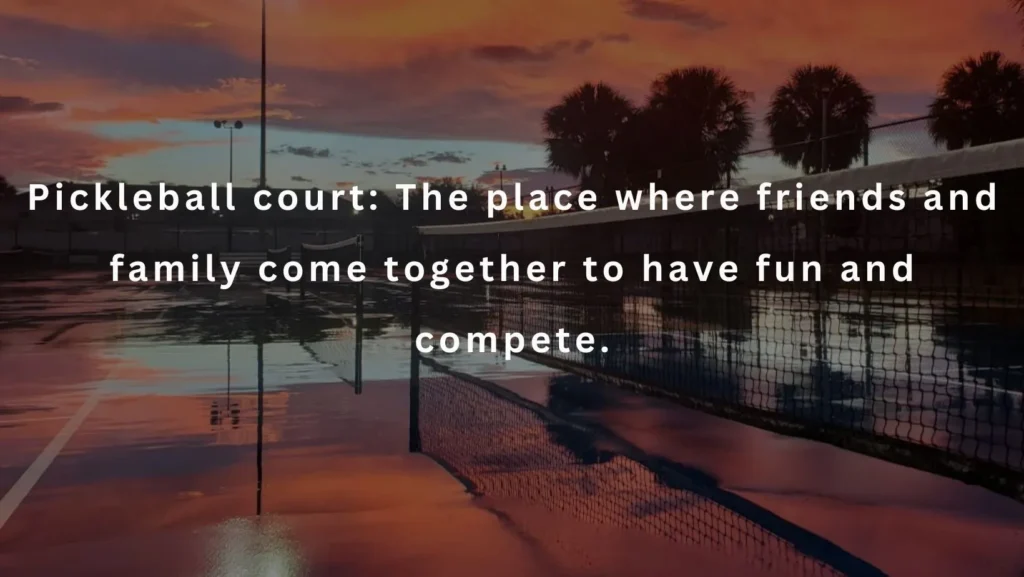
Indoor Pickleball Tournaments
Official guidelines for indoor tournaments
Indoor pickleball tournaments follow official guidelines to ensure fair play and consistent standards. The USA Pickleball Federation (USAPF) and other governing bodies provide detailed rules and regulations for indoor tournaments. These guidelines cover aspects such as court specifications, equipment standards, scoring procedures, and code of conduct for players and officials.
It is essential for participants in indoor tournaments to familiarize themselves with these guidelines to ensure a smooth and enjoyable tournament experience.
Pickleball tournament stories
Indoor pickleball tournaments often feature exciting and memorable stories of players showcasing their skills and competitive spirit. From epic comebacks and intense matches to moments of camaraderie and sportsmanship, tournaments offer a platform for players to showcase their talents and connect with fellow enthusiasts. These stories serve as inspiration and motivation for players of all levels, encouraging them to pursue their passion for pickleball and strive for excellence.
Preparing for an indoor tournament
If you plan to participate in an indoor pickleball tournament, meticulous preparation is essential. Start by familiarizing yourself with the tournament rules and regulations to ensure compliance. Practice regularly to refine your skills, focusing on strategies and shots suited for indoor play.
Pay attention to your fitness and conditioning to endure the demanding nature of tournament play. Arrive well-rested, hydrated, and equipped with the necessary attire, equipment, and mindset to perform at your best.
Places with Indoor Pickleball Courts
Community centers with indoor courts
Community centers are often equipped with indoor pickleball courts, offering residents the opportunity to play and connect with fellow players. These centers provide convenient access to the sport, and their indoor courts ensure playability throughout the year. Many community centers also offer pickleball lessons, social leagues, and organized tournaments, catering to players of all skill levels and fostering a sense of community.
Schools with indoor courts
Schools frequently have indoor courts that can be utilized for pickleball. Physical education programs often include pickleball in their curriculum, exposing students to the sport at a young age. Additionally, schools may open their indoor courts to the public during non-school hours, allowing pickleball enthusiasts to enjoy the facilities. Contact local schools or school districts to inquire about the availability of indoor pickleball courts for public use.
Finding indoor courts near you
Finding indoor pickleball courts near you can be accomplished through various methods. Local sports complexes, fitness centers, and YMCAs often have indoor courts available for public use. Municipal parks and recreation departments may also have information on indoor courts in your area.
Online directories and community forums specific to pickleball can provide valuable insights and recommendations from fellow players. Exploring these avenues will help you discover the indoor pickleball courts nearest to your location.
In conclusion, pickleball, with its humble origins and growing popularity, has captivated players around the world. Indoor pickleball courts offer unique advantages, such as protection from adverse weather, year-round availability, reduced noise disturbance, and increased player comfort.
While there are some disadvantages, such as limited space and higher establishment costs, the benefits outweigh the drawbacks for many enthusiasts. Adapting to the indoor court atmosphere, understanding the differences between indoor and outdoor play, and maintaining the indoor courts are crucial aspects for players to consider.
Indoor pickleball tournaments offer exciting opportunities for competition and camaraderie, while community centers and schools provide accessible locations for enjoying the sport. Whether you choose to play indoors or outdoors, pickleball offers a thrilling and engaging experience for players of all ages and skill levels.
FAQs [ Indoor vs Outdoor Pickleball Courts ]
1. Is it easier to play on indoor pickleball courts?
A: While indoor courts offer a controlled environment and consistent conditions, the ease of play ultimately depends on personal preference and playing style. Some players may find the controlled climate and predictable surface of indoor courts more favorable, while others enjoy the challenges and outdoor ambiance of playing on outdoor courts.
2. Can outdoor pickleball courts be used during inclement weather?
A: Outdoor pickleball courts are subject to weather conditions and may not be suitable during heavy rain, extreme heat, or severe cold. It’s essential to consider the local climate and choose appropriate playing times to ensure safety and an enjoyable experience.
3. Are indoor pickleball courts more expensive to use?
A: The cost of using indoor pickleball courts can vary depending on the facility and location. Some venues may require membership or hourly court rental fees. It’s advisable to check with local sports facilities to understand the pricing structure and availability of indoor court options in your area.
4. Do outdoor pickleball courts require any special maintenance?
A: Outdoor pickleball courts may require periodic maintenance to ensure safe and optimal playing conditions. This can include repairs to cracks or uneven surfaces, regular cleaning to remove debris, and resurfacing as needed. Maintenance responsibilities often fall under the jurisdiction of the park or recreational authority managing the outdoor courts.
5. Which type of court is better for beginners?
A: Both indoor and outdoor courts can be suitable for beginners. Indoor courts provide a controlled environment that can help newcomers focus on learning the basics without external weather factors. Outdoor courts offer a more social and immersive experience, allowing beginners to connect with the local pickleball community and benefit from their guidance and support.
6. Can I play on both indoor and outdoor pickleball courts?
A: Absolutely! Many players enjoy the versatility of playing on both indoor and outdoor courts. This allows them to experience the unique benefits of each environment and adapt their gameplay accordingly. If you have access to both types of courts, take advantage of the opportunity to diversify your pickleball experience.
